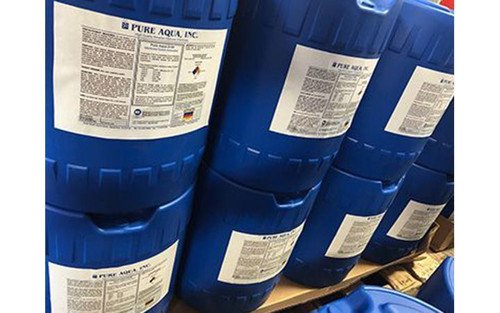Ion Exchange Resin manufacturers have developed a strong-base anion exchange resin for this particular application and it is quite effective that it can reduce the Ionic Silica into parts-per-billion (ppb) levels. Ionic Silica is a very weak acid that is why it is removed by a Hydroxide-based cycle almost completely. Silica Ion-Exchange systems are normally composed of mineral tanks and since we use strong base chemical to regenerate the resin in this system so we need to have corrosion resistant tanks such as (FRP tanks and Rubber-lined Steel tanks). Valves and piping should be corrosion-resistant as well such as Aquamatic valves with PVC or Rubber-lined face piping.
Silica Ion-Exchange system can complement any water treatment system if there is a need to remove the silica from water specifically. If the water contains silica and other unwanted ions and water purity is also an importance, then a Continuous Deionizing system is much more appropriate.
[custom-specifications]
Silica-content of water are very critical to High Pressure Steam boiler system as it is volatile enough that it can carry over to the vapor partition and can deposit on turbine. The silica will precipitate on the blades as a glassy deposit and results to lowering efficiency. Any water with high silica content is also a threat to efficiency of Heat Exchanger in Cooling Water systems. Silica sometimes becomes a limiting factor in the cycle of concentration in Cooling Tower systems and they are mostly hard to deal with once they become a silica-based scale on the heat transfer area of the exchanger.
[/custom-specifications]
[custom-features]
Ion Exchange Resin manufacturers have developed a strong-base anion exchange resin for this particular application and it is quite effective that it can reduce the Ionic Silica into parts-per-billion (ppb) levels. Ionic Silica is a very weak acid that is why it is removed by a Hydroxide-based cycle almost completely. Silica Ion-Exchange systems are normally composed of mineral tanks and since we use strong base chemical to regenerate the resin in this system so we need to have corrosion resistant tanks such as (FRP tanks and Rubber-lined Steel tanks). Valves and piping should be corrosion-resistant as well such as Aquamatic valves with PVC or Rubber-lined face piping.
[/custom-features]
[custom-usage]
There are 2 forms of Silica in water, colloidal silica and ionic silica.
- Colloidal silica has no ionic properties, but has a relatively large size and can be effectively removed by fine mechanical methods like Ultrafiltration (UF). It can also be reduced by coagulation method such as in a clarifier system. Techniques which rely on ionic charge, such as ion-exchange and continuous deionization, have very little impact on removal of colloidal silica.
- Ionic silica is much smaller sized than colloidal silica and due to this, mechanical removal techniques such as flocculation, clarification, filtration and flotation are not an effective removal process. Technologies that allow removing silica are brackish or tap water reverse osmosis, Electrodeionization, Mixed Bed Deionizers or Ion Exchange.
[/custom-usage]
-
High quality!
Very neat design and comes with all the components I need for a smooth operation.
- Related Project1:
- https://pureaqua.com/twin-alternating-softener-nicaragua-project/
- Related Project2:
- https://pureaqua.com/commercial-water-softener-126720-gpd-jamaica/
- Related Project3:
- https://pureaqua.com/water-softeners-2x-27400-gpd-ecuador/
- Related Project4:
- https://pureaqua.com/twin-alternating-water-softener-72000-gpd-bolivia/
 ENGLISH
ENGLISH ESPAÑOL
ESPAÑOL العربية
العربية PORTUGUÉS
PORTUGUÉS FRANÇAIS
FRANÇAIS













